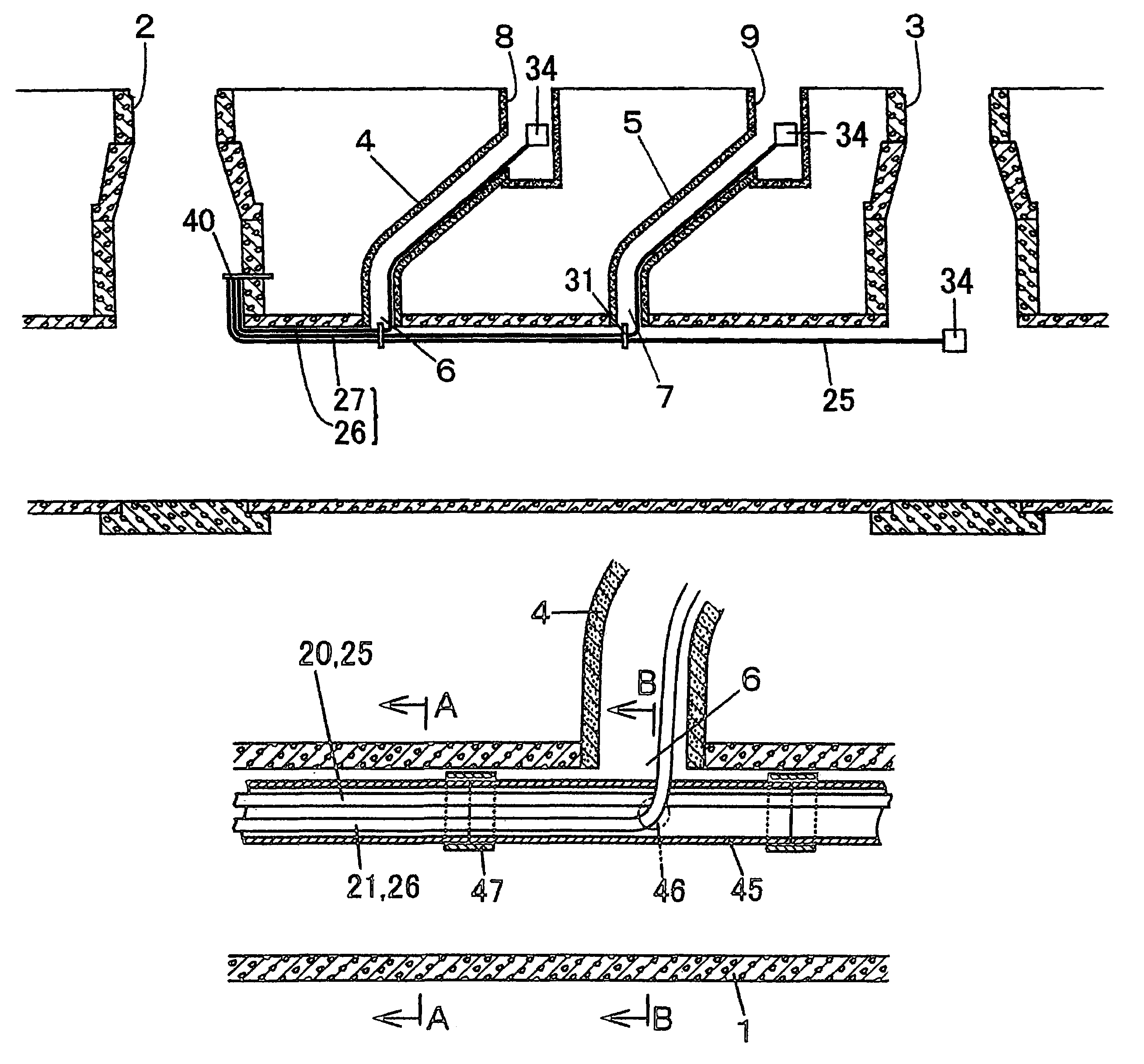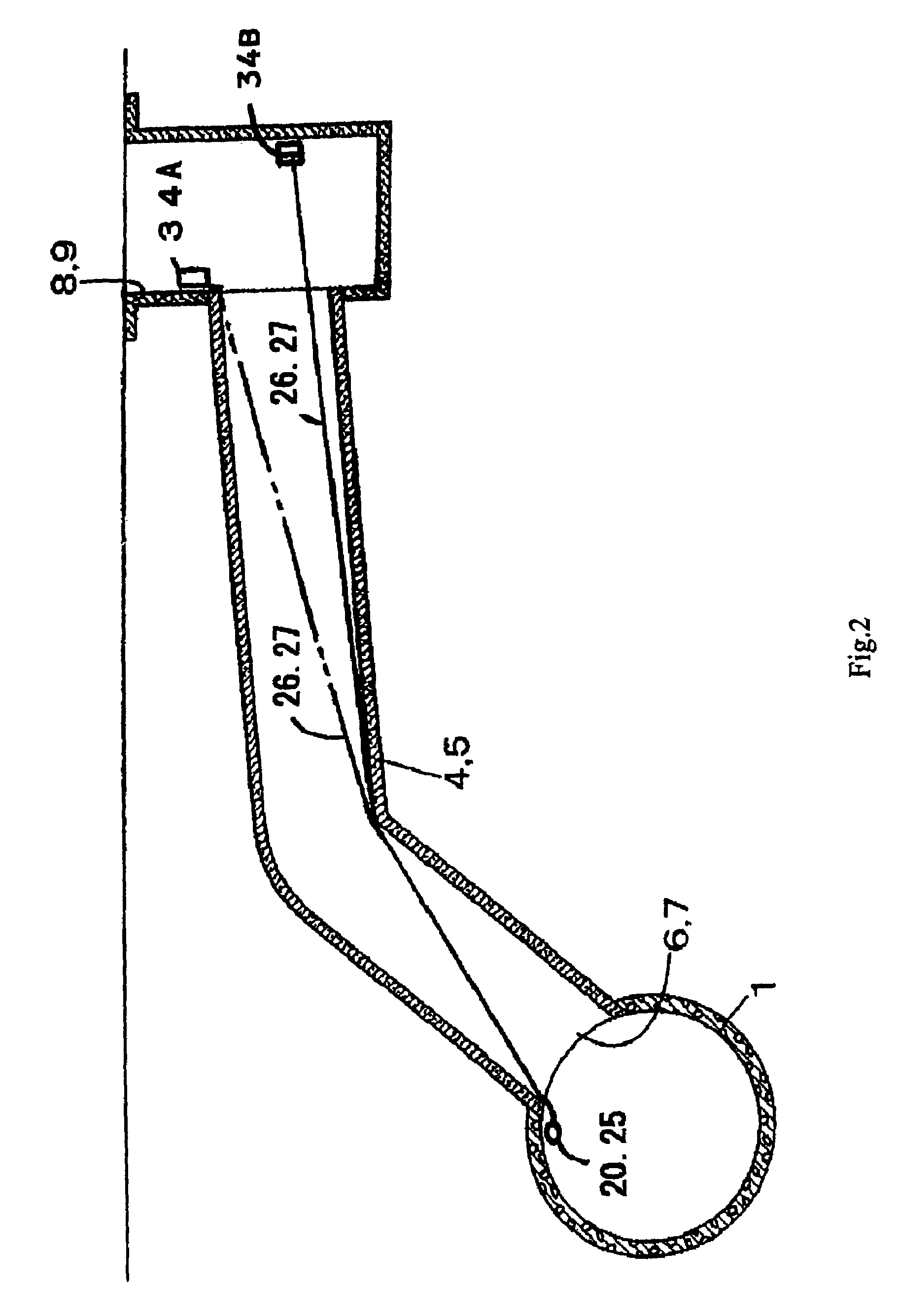Method and structure for laying communication cable in underground line, and members used for laying
a technology of communication cable and underground line, which is applied in the direction of cables, cables installed in underground tubes, instruments, etc., can solve the problems of large amount of time required for the hook mounting operation, the elongation of the optical fiber cable at breakage is small, and the inability to meet the requirements of the application
- Summary
- Abstract
- Description
- Claims
- Application Information
AI Technical Summary
Benefits of technology
Problems solved by technology
Method used
Image
Examples
Embodiment Construction
[0184]The embodiments of the present invention will be described below referring to the drawings. In the following description, it is assumed that underground pipelines are a sewer pipeline, but the present invention imposes no limitations on the kinds of pipeline systems or pipes because no jigs such as a hook are not directly attached to the inner surface of the underground pipeline. Potential applications include all kinds of underground pipelines such as gas pipelines laid by steel pipes, water supply pipelines laid by cast iron pipes, storm drain pipelines, and power cable pipelines. When the foregoing pipelines are not provided with manholes which are an existing pit, it is possible to utilize the present invention by installing a new pit. The branch pipe in the present invention means a lateral pipe in sewer pipeline.
[0185]FIG. 1 shows a sewer pipeline as an example of the underground pipeline, the numeral 1 denotes a main pipe of a sewerage pipe laid between a manhole 2 and ...
PUM
 Login to View More
Login to View More Abstract
Description
Claims
Application Information
 Login to View More
Login to View More - R&D
- Intellectual Property
- Life Sciences
- Materials
- Tech Scout
- Unparalleled Data Quality
- Higher Quality Content
- 60% Fewer Hallucinations
Browse by: Latest US Patents, China's latest patents, Technical Efficacy Thesaurus, Application Domain, Technology Topic, Popular Technical Reports.
© 2025 PatSnap. All rights reserved.Legal|Privacy policy|Modern Slavery Act Transparency Statement|Sitemap|About US| Contact US: help@patsnap.com



